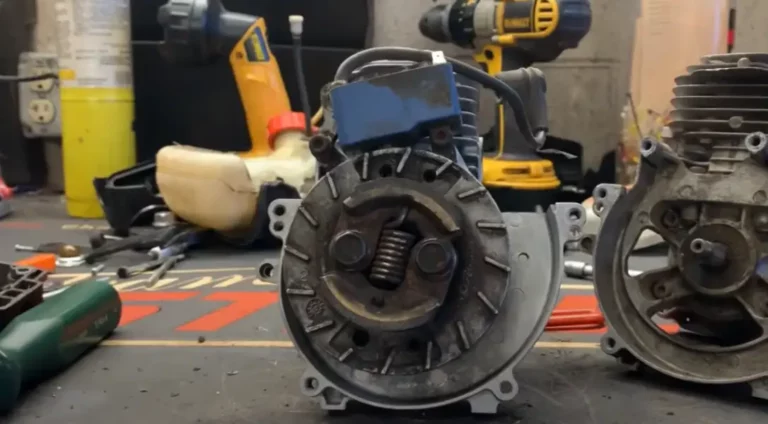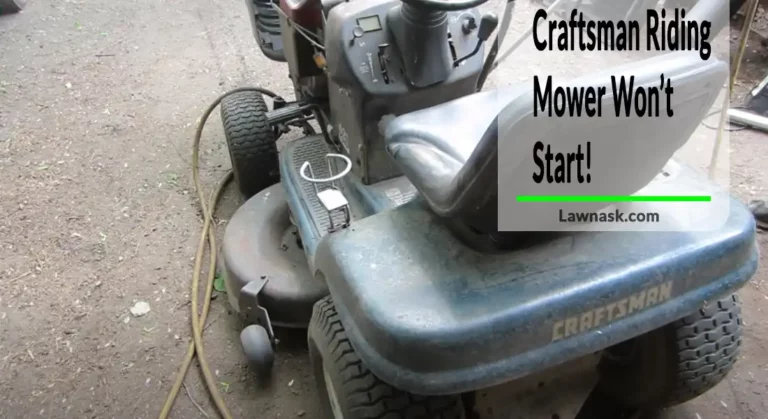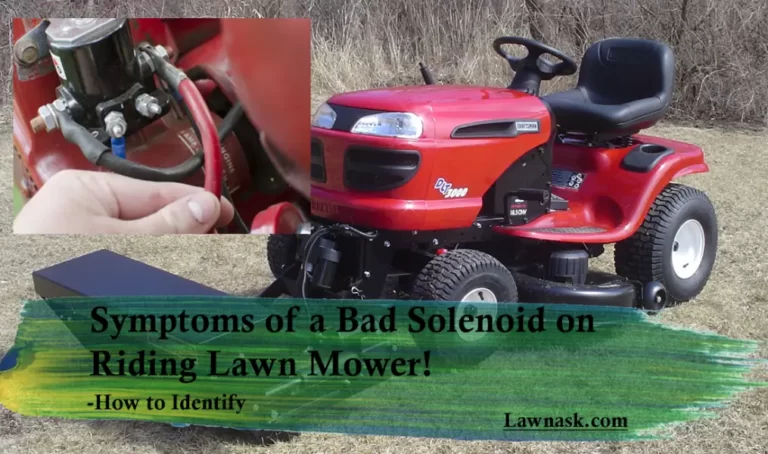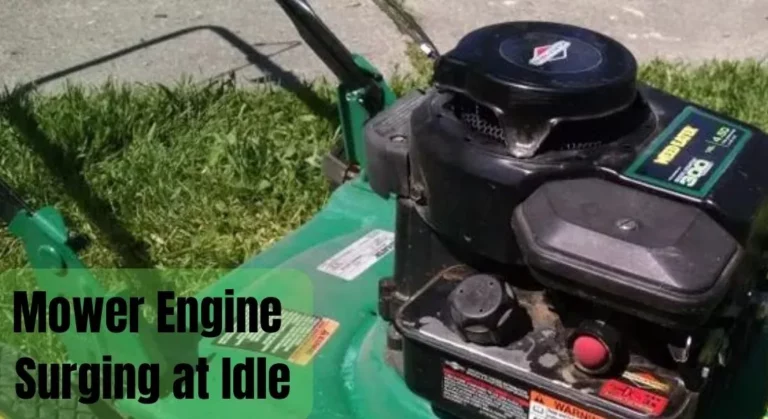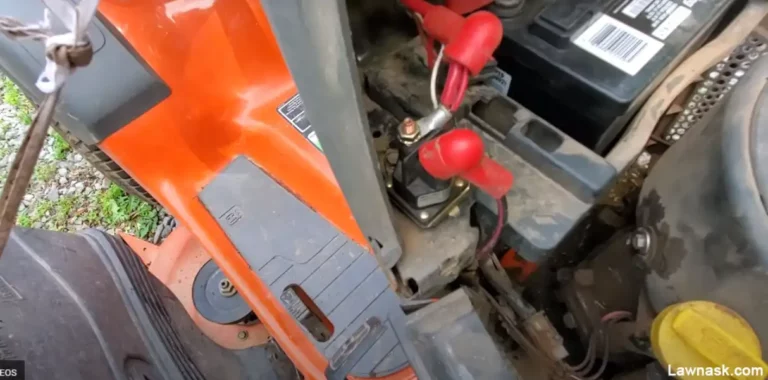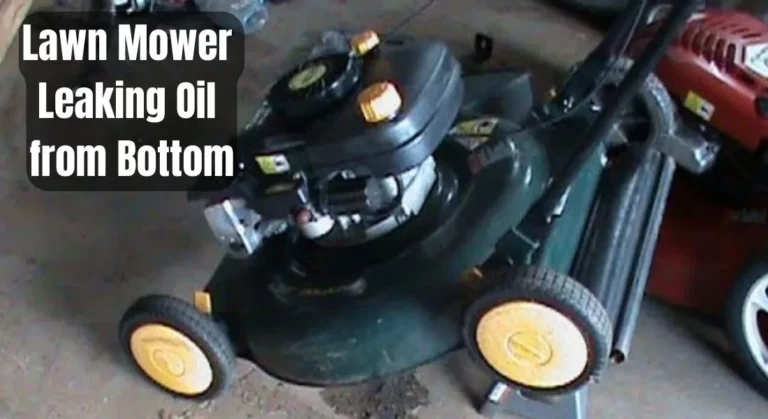Lawn Mower Died While Mowing And Won’t Start: Causes And Fixes Explained!
Its incredibly disappointing when your mower dies while in the middle of a job. In most cases the mower just stops dead like the key was shut off. Fortunately, there are a few common reasons for this and some easy solutions.
A lawnmower dying when mowing and not starting usually occurs for one of three reasons: a dirty air filter, a dead battery, drive belt problem, dirty spark plug and many more. But still many reasons exist for the issue.
This is going to be just the article for you if easily solving this issue is what you want. Read on till the end.
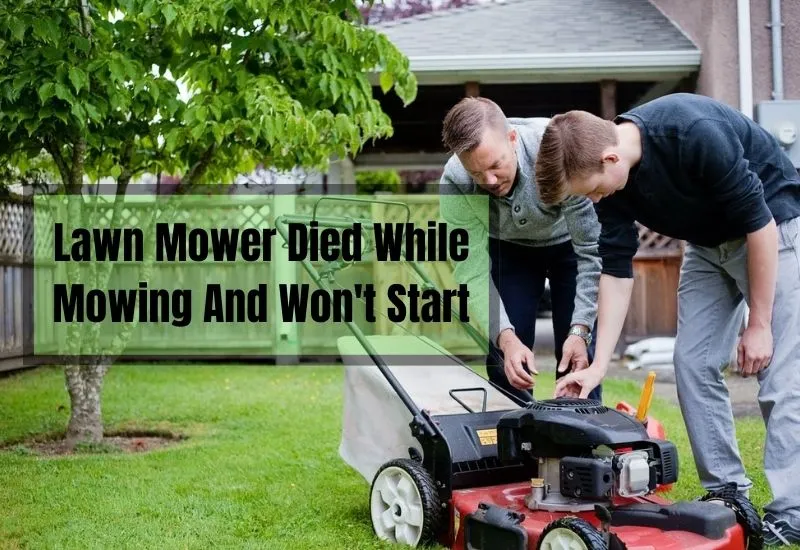
Reasons & Fixes Of Lawn Mower Died While Mowing And Won’t Start
Many parts of the mower could be failing, causing the mower to stop abruptly. Here’s covering most of those reasons and their fixes:
1. Motor and Fuel System Issues
Fuel system issues are a common cause of lawnmower dying while mowing. Clogged fuel filters, bad fuel lines, low fuel levels, dirty carburetors, and stale fuel are all potential causes.
You may also have a flywheel that moves but the motor won’t not turn over. This means something within the motor is bad. It could be a bad sheared drive belt too.
Diagnosis
Check fuel lines, filter, and spark plug. Clean the carburetor and look for cracked hoses. Check the fuel pump, fuel shut-off valve, and fuel tank vent.
Isolate engine from chassis. Inspect for a problem with the belts and the flywheel. Take the plugs out and try to rotate the flywheel by hand.
The Fix
Replace any cracked hoses and pipes. If none no blockages or leaks are found, empty the fuel tank and refill it with fresh fuel.
Check the spark plug and replace it if necessary. Clean the air filter and carburetor.
Replace the deck and/or drive belts if necessary. If flywheel is the problem, the motor is the problem. In this case, you should go to your nearest professional and get help.
2. Carburetor Issues
Other than clogging, the carburetor may be out of adjustment. It also includes air leaks, faulty float valves, and fuel tank issues.
Diagnosis
Carburetor issues can be diagnosed by checking the spark plug, fuel filter, air filter, and fuel lines.
The spark plug may be worn or fouled. The fuel filter may be clogged or dirty and the fuel lines should be checked for any kinks or blockages.
The Fix
If the carburetor is dirty or clogged, the engine may not be getting enough fuel to stay running.
- First, remove the air filter and the carburetor bowl.
- Then, use a carburetor cleaner and a small brush to clean all the surfaces of the carburetor.
- If the fuel filter is clogged or dirty, it should also be replaced.
- The air filter should be clean and free of debris.
- Change any kinked or leaking parts.
- Once everything is clean, reassemble the carburetor and air filter, and then start the mower to make sure the issue has been fixed.
If the mower still won’t start, you may need to replace the carburetor.
For more information on common lawn mower carburetor problems, check out this article: 8 Common Lawn Mower Carburetor Problems.
3. Spark Plug Issues
The spark plug may be fouled or worn out, preventing it from sparking and creating the combustion needed to power the engine.
Diagnosis
Remove the spark plug and check if it has a spark with a spark tester.
The Fix
If there is no spark, the spark plug should be replaced. If there is a spark, then the problem could be with the fuel system or the engine itself.
Note: Before going for the spark plug, make sure the fuel system and carburetor are functioning properly. You should check the compression, the piston rings, and the valves for their proper functionality too.
If you’re having trouble with your mower not turning over unless the spark plug is out, this article may be helpful: Why My Mower Won’t Turn Over Unless Spark Plug Is Out?
4. Battery Issues
Weak battery, loose battery connections, or corroded battery terminals can cause the mower to stop while running.
Diagnosis
Here are the four stages of diagnosis:
- Firstly, check the battery voltage using a multimeter. If the voltage is lower than 12.6 volts, then it is likely that the battery is the issue.
- Secondly, check the cables to the battery to ensure they are clean and secure.
- Thirdly, the charging system could be an issue. The regulator rectifier should be checked for operation and the stator should be tested for correct output.
- Finally, it is also important to ensure the alternator belt is securely in place.
The Fix
Change a battery that has a voltage lower than 12.6 volts. If the cables to the battery are corroded or loose, they should be replaced.
If the battery and cables appear to be in good condition, then the charging system and alternator belt can be the issue.
5. Starter Issues
A faulty starter, worn starter rope, or jammed starter gear can cause the mower to stop abruptly.
Diagnosis
By now, if the spark plug and battery connections check out, try inspecting the flywheel key. Make sure it is in good condition (they can break and wear out over time).
Inspect the starter solenoid, a small cylinder-shaped device attached to the starter (signs of damage or wear, cracks, rust, or corrosion). Check the contacts on the solenoid for any signs of burning or damage.
The Fix
Replace the spark plug and clean or replace the air filter if needed. If these are already done, you may need to replace the starter.
To do this, first, disconnect the negative battery cable and ensure the spark plug is disconnected. Then, remove the starter and replace it with a new one. Be sure to follow the manufacturer’s instructions for installation.
If the solenoid is the problem, replacing just that might solve the issue. The same goes for a worn-out flywheel key.
6. Electrical Issues
Loose or corroded wires, faulty switches, or a defective ignition coil consist of electrical issues.
Diagnosis
Conducting voltage tests, checking for frayed wiring, loose connections are the probable way to diagnose electrical issues. Inspect the safety switches and ensure that they are in good working order.
The Fix
Replace any worn-out wiring. If the ignition coil is the problem, replace it. Replace any other component that has no voltage.
7. Oil Issues
Low oil level, old oil, or clogged oil filter are common reasons for mower bogging down or stopping.
Diagnosis
Start by checking the oil level. If the oil level is full, check the oil filter for clogging. There may be contaminants in the oil. Check the fuel lines to make sure they are not clogged.
In 95% of the cases, the engine is stored with ethanol fuel in the carb, fuel lines, and/or fuel tank over winter. Not only does old fuel not burn, but as it sits in the float bowl it will clog the jets that allow the engine to crank
The Fix
If the oil level is low, you should refill the oil up to the required level. Change the oil if it is contaminated with debris or is very old.
Make sure the oil filter is clean and not clogged. If the fuel lines are clogged, you should clean them or replace them.
Related Post: What Causes A Lawn Mower To Leak Oil?
8. Clutch System Issues
Worn or loose belts, broken pulleys, or jammed clutch causes the mower to stop midway.
Diagnosis
Check for any signs of wear or damage to the mower’s clutch system components. Inspect the mower’s drive system for any signs of wear or damage.
Whether the mower has a manual or automatic clutch system, ensure the clutch lever is engaging and disengaging properly.
Check the mower blades and clutch cable for any damage or wear.
The Fix
In any case of damage, replace the clutch system.
9. Muffler Issues
Clogged spark arrester, blocked exhaust port, or disconnected exhaust pipe can stop a mower abruptly.
Diagnosis
The most common symptom of a muffler issue is a loud backfire when starting the engine.
Other potential symptoms include excess smoke, reduced power, and a decrease in fuel efficiency.
To diagnose a muffler issue, you’ll need to check the muffler for cracks, leaks, or blockages.
The Fix
For any damage, blockages, or cracks, the muffler needs to be replaced. You can also check for any loose screws or connections. If all connections are secure, try cleaning the muffler to remove any built-up debris.
Finally, confirm that you have the correct fuel-air mixture.
10. Gearbox Issues
Worn gears, jammed gears, or loose drive belt can stop a mower abruptly.
Diagnosis
Gearbox Issues are often caused by a lack of lubrication or a build-up of dirt and debris.
The Fix
To fix Gearbox Issues, clean the gearbox thoroughly and check for any loose or worn parts.
Lubricate all moving parts with high-quality oil and grease. Ensure the gearbox is properly aligned.
If the issue persists, then it is likely that the gearbox needs to be replaced.
It is important to use the correct grade and type of oil when lubricating the gearbox.
Frequently Asked Questions (FAQs)
How do I prevent my lawn mower from abruptly stopping?
Keep the fuel tank full, ensure there are no obstructive objects in the blade, clean or replace the air filter regularly, inspect the electrical connections for damage, and periodically check the spark plug for damage or corrosion.
Which transmission oil do I need for my lawn tractor?
Multigrade oil of viscosity class SAE 20W-50 are appropriate.
Related Posts:
- 7 Reasons Why Your Lawn Mower Turns Over but Won’t Start
- Lawn Mower Struggles To Turn Over: 6 Immediate Things To Check
- 5 Reasons Why My Mower Won’t Turn Over Unless Spark Plug Is Out
- John Deere Electric PTO Troubleshooting: Why the PTO Fails and What to Do
- Lawn Mower Gas Pouring Out of Carburetor: Reasons & Solutions

